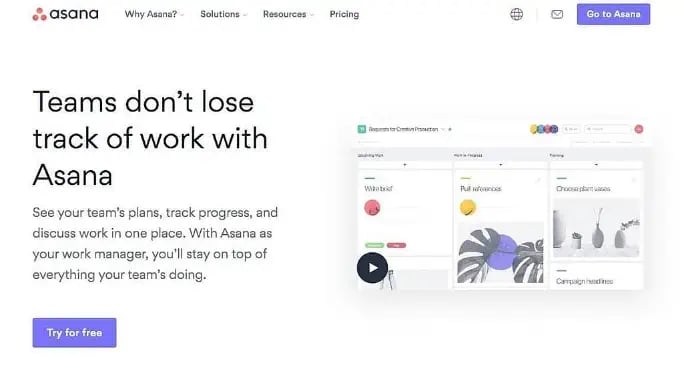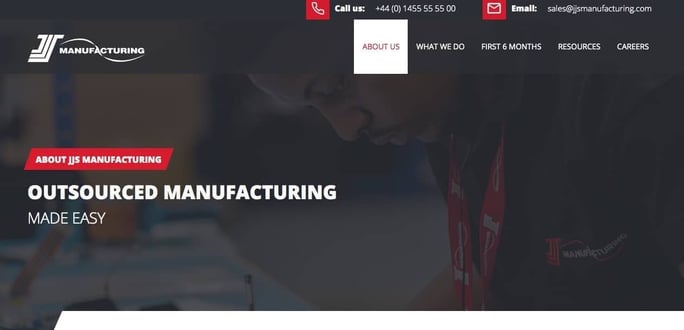What do your customers see, feel and experience when they visit your website? Can they easily navigate to your services? Is the layout easy to follow? Does your website communicate quickly and succinctly how your products or services can solve for their pain?
Your website should be designed in such a way that it offers a flawless digital experience for your customers.
Your website also needs to address the core concerns of your customers head-on. You want visitors to your site to go away feeling lighter than they did before because you’ve shown them there is a solution to their problems.
All this works to delight your customers and create a memorable digital experience that will keep you front of mind as they explore their options.
Here, we have compiled 8 website tips to ensure you create a memorable digital experience for your customers.
1. Create content that will appeal to your personas
Your website is the digital hub that connects you to the world. It is the single point that brings everything together for your customer. And it has to respond to what they are looking for in ways that facilitate their journey through your domain.
Have you noticed how many websites:
- Fail to communicate what the company actually does?
- Make their products and services the main focus?
- Use complex, jargon-filled copy that is hard to decipher?
Telling your story well means recognising that customers should be the hero in the stories you tell. They are not looking for another hero, they are looking for a guide. And clarity is essential. People don’t buy the best products and services - they buy the ones that are best communicated.
When a potential customer visits your site, they are looking for insights that will help them grow and improve their position and status. But they don’t want to work hard to find them. They need to understand fast. And if you confuse, you’ll lose. Fail in creating content that engages - and customers will simply block you out and move on.
Your homepage should identify the principal problem your customers are facing, how they feel, and why it matters. It should empathise and establish your brand’s authority as a solution provider and communicate how you help them.
2. Have clear calls to action
When a potential customer visits your site, do they know what to do next?
They won’t know what pages to look at or actions to take if you don’t provide them with direction.
Call-to-action (CTA) buttons are one of the many elements that indicate the next step a user should take on a page. They should always appear above the fold, where customers can’t miss them.
Take a look at this example from Asana:

And this from OAG:
.webp?width=684&name=How%20B2B%20companies%20can%20improve(2).webp)
Your CTAs should cover different stages of the buyer’s journey. The ‘Schedule time to talk’ and ‘Free trial’ buttons in the OAG example are for people at the bottom of the funnel - already at the decision-making stage.
While the ‘Find out more’ button appeals to those at the top of the funnel who are just starting their journey.
3. Make your navigation seamless
A disorganised or confusing navigation bar is enough to turn your potential customers off.
If they can’t find what they are looking for, they have no reason to stay on your site. Instead, they’ll move on and look for a competitor that offers a better experience.
The navigation bar should provide visitors with clear, succinct choices of where they can go. So the labels you choose shouldn’t be unnecessarily long or overcomplicated.
And avoid drop-down menus - if you can. Studies show that many users find drop-down menus annoying because they demand more effort from them to think about where they want to go.
The layout of your navigation bar must also be responsive on mobile. The ‘hamburger’ icon, placed in the top right or left-hand corner, can be used to condense your menu for mobile visitors. And this leads us on to our next tip…
4. Design for mobile
B2B buyers are just as glued to their phones as consumers. And creating a positive mobile experience that connects smoothly with other channels should be an integral part of your marketing strategy.
The rise of remote working means B2B buyers are no longer tethered to their desks. When they pop onto their mobile to do something quickly for work, your website needs to be able to provide a flawless experience.
More companies are taking a mobile-first approach and creating a user experience for mobile devices over desktop and other platforms. Stating small and working up to larger sized devices will ensure the best functionality.
A truly responsive website will display content according to the format of the screen used to view it. A nice way to picture this is to imagine that your content is like water. It flows into the screen and fills it according to its shape.
And it’s not just the layout you need to think about when it comes to designing for mobile, but the copy too. Think short headlines, short paragraphs, and concise writing.
5. Use authentic photography
The most effective websites are those rich in original photographs that have been taken by a professional specifically for use on the site.
Using a professional photographer to shoot imagery for your site gives you complete control over the tone of the photos. And allows you to create a strong brand identity that stock imagery can’t replicate.
Take a look at how JJS Manufacturing uses professional photos of their team and their factories throughout their website. The result is a more authentic experience for potential customers that helps them create a stronger connection with the company.
.jpg?width=1276&name=How%20B2B%20companies%20can%20improve%20th%20(1).jpg)

Notice the JJS branding in the second image? Including nods to your company logo and merchandise in your photographs helps to solidify your brand identify.
Despite the initial upfront cost of hiring a professional photographer for a day, you will end up with a library of hundreds or thousands of photographs you can use as and when you wish.
6. Use video
Videos enhance the digital experience for your customers.
They are a great way to share your story and engage people with your content. They keep visitors on your website for longer. And 73% of B2B marketers say video positively impacts their ROI.
Videos on your website can take many forms, including demo videos, expert interviews, educational and explainer episodes, case studies and testimonials, event promos and more.
Using JJS Manufacturing again as an example; they have included a video on their homepage that demonstrates their offering, bringing it to life for visitors.
7. Consider a chatbot
Chatbots provide a way to offer a more personalised experience to your customers when they visit your website.
People often find it faster to type a question in than to find the answer on their own - depending on how streamlined your website is, of course!
If you consider the volume of queries and questions that arise throughout the B2B buying process, chatbots can undoubtedly play an important role in providing quick, instant responses, as well as an opportunity to build deeper relationships with buyers.
8. Keep testing your site
Traditionally, website building is a ‘set and forget’ process. You build a site and only a few years down the line when it begins to feel outdated do you ditch it and start the process of designing a whole new one.
But that process is obsolete. Building a launchpad site, then making incremental improvements driven by data should become a fundamental part of creating a better digital experience.
Evaluating conversion paths and where users click can reveal if your website is performing the way you hoped it would. And your content should be regularly reviewed to ensure it stays up to date. Even changing your button colours, headers or CTAs to determine which is most effective can make a big difference to your website’s performance.
Simple A/B tests and heat maps can help you determine what’s working and what’s not. These tests reveal a huge amount of data that helps you see how your website is working as a whole - so you can make changes where necessary.
Every aspect of your website should provide value to your customers. Whether it’s a call to action, a piece of copy, an image or video. Each should serve to aid them on their journey through your website or to inform, engage and build a connection with your brand.
But you’ll only be able to do this if you first understand the needs of your customers. So before you even think about designing a digital experience for your customers, you need to put yourselves in their shoes and develop meaningful buyer personas.


